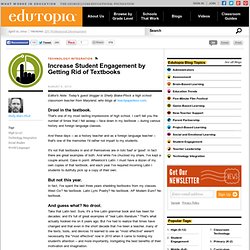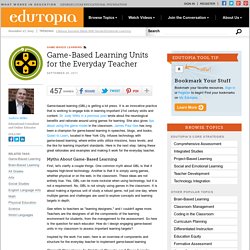

Prezi. How To Speak Like A Native. Can an adult learn to speak a second language with the accent of a native?

Not likely, but new research suggests that we would make better progress, and be understood more easily by our conversational partners, if we abandoned a perfect accent as our goal in the language learning process. For decades, traditional language instruction held up native-like pronunciation as the ideal, enforced by doses of “fear, embarrassment and conformity,” in the words of Murray J. Munro, a professor of linguistics at Simon Fraser University in Canada. Munro and a co-author, University of Alberta linguist Tracy Derwing, argue that this ideal is “clearly unrealistic,” leading to disappointment and frustration on the part of most adult language learners.
(MORE: What Invented Languages Can Teach Us) Both of these assumptions are wrongheaded, contend Munro and Derwing. (MORE: The New Ways Doctors Learn) Increase Student Engagement by Getting Rid of Textbooks. Editor's Note: Today's guest blogger is Shelly Blake-Plock a high school classroom teacher from Maryland, who blogs at teachpaperless.com.

Drool in the textbook. That's one of my most lasting impressions of high school. I can't tell you the number of times that I fell asleep -- face down in my textbook -- during various history and foreign language classes. And these days -- as a history teacher and as a foreign language teacher -- that's one of the memories I'd rather not impart to my students. It's not that textbooks in and of themselves are in toto 'bad' or 'good'. But not this year. In fact, I've spent the last three years shedding textbooks from my classes.
And guess what? Take that Latin text. Game-Based Learning Units for the Everyday Teacher. Game-based learning (GBL) is getting a lot press.

It is an innovative practice that is working to engage kids in learning important 21st century skills and content. Dr. Judy Willis in a previous post wrote about the neurological benefits and rationale around using games for learning. She also gives tips about using the game model in the classroom. James Paul Gee has long been a champion for game-based learning in speeches, blogs, and books. Myths About Game-Based Learning First, let's clarify a couple things. Gee refers to teachers as "learning designers," and I couldn't agree more. Inspired by the work I've seen, here is an overview of components and structure for the everyday teacher to implement game-based learning Overall Structure: Individual Quests and Boss Levels A game-based learning unit should consist of both smaller quests and more robust boss levels.
Boss levels are more rigorous missions that require students to synthesize the content and skills learned in the quests. Avatar. Ten Steps to Better Student Engagement. Tristan de Frondeville As a teacher, my goal was to go home at the end of each day with more energy than I had at the beginning of the day.

Seriously. Now, as I travel the country coaching teachers on how to successfully use project learning, my goal remains the same. And I try to teach educators the strategies they need to achieve this goal in their own classrooms. A teacher in one of my workshops said, "When my students and I are in the flow, then I don't feel like I have to work as hard. " Project-based classrooms with an active-learning environment make such in-the-flow moments more common. The good news is that the strategies for creating and managing high-quality project-learning environments are productive in any classroom, whether project learning is a central part of the curriculum or not.
Create an Emotionally Safe Classroom Students who have been shamed or belittled by the teacher or another student will not effectively engage in challenging tasks. Twitter Facts And Figures [INFOGRAPHIC] Class Blog Challenge. Aprendizaje colaborativo. Colaborativo.pdf (application/pdf Objeto) » El proceso del pensamiento. Pensar, a partir de lo que vimos en la anterior entrada, implica ser creativo (generar ideas), ser crítico (saber analizar y evaluar ideas), y hacer todo esto de manera rigurosa y atenta (pensar “cuidadosamente”).

Todo esto, además, son los pasos previos que posibilitan la toma de cualquier decisión. El pensamiento creativo y el crítico van de la mano, pues es necesario tener ideas pero saber evaluar su “calidad”, y, en función de eso, tomar una decisión. La mutua implicación de todos los procesos que configuran el pensamiento requiere de un método de enseñanza de estas habilidades completo e integrador.
La infusión mejora los contenidos al involucrar a los alumnos en el pensamiento profundo en el transcurso de su aprendizaje, a la vez que mejora su calidad de vida al incorporarse las habilidades de pensamiento a su vida cotidiana. ¿En qué lugar del currículo enseñamos destrezas de pensamiento? Por ejemplo, podemos aplicar un esquema básico de toma de decisiones a un contenido concreto. » David Perkins. Los 7 principios del aprendizaje pleno.